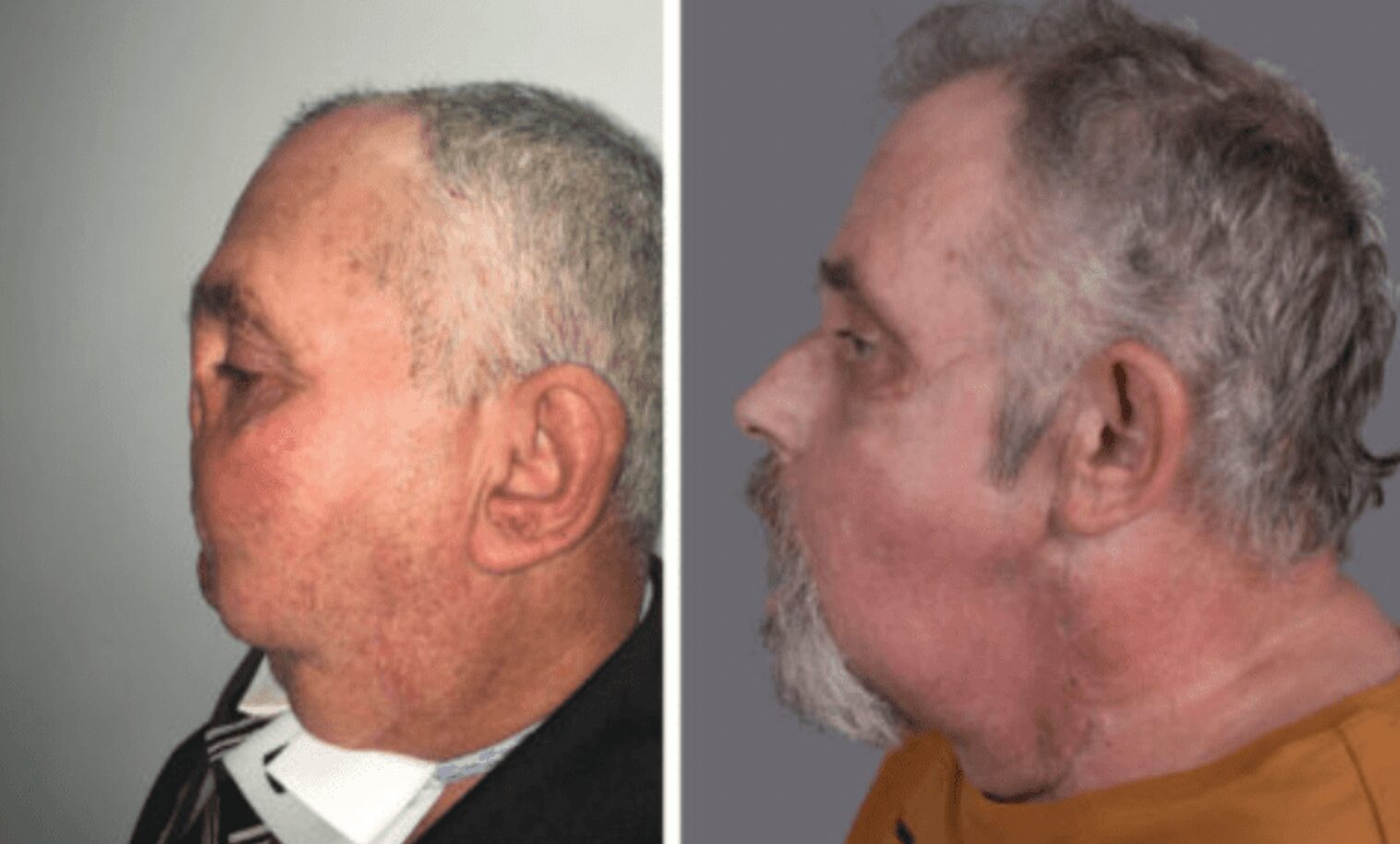A group of very skilled doctors from the Hôpital Maisonneuve-Rosemont (CIUSSS de l’Est-de-l’Île-de-Montréal) recently did something very impressive: they did the first face transplant in Canada.
A famous plastic surgeon named Dr. Daniel Borsuk led this groundbreaking operation with help from the University of Montréal. It gave a scarred 64-year-old man new hope.
With this success, the patient became the oldest person in history to receive a face transplant, showing how far medical science and technology have come.

The process, which took more than thirty hours, needed the skills of more than one hundred professionals, such as doctors, nurses, and other medical staff.
It was very important for the success of the donation that these experts worked together and coordinated well. This success was also made possible by the organ gift arranged by Transplant Québec and the kindness and generosity of the donor’s family.
A professor at the Université de Montréal named Dr. Borsuk thanked the team and talked about how this delicate process used science, technology, engineering, and art all together.
Expertise and experience from the first people to do face transplants, along with new ideas, helped make this life-changing process a success.
The patient has made amazing growth four months after the surgery. He is now able to breathe on his own, chew with his new jaws, smell with his new nose, and speak with his new lips. A gunshot wound to the patient’s face seven years ago left him with many scars on his face, which made his quality of life very bad.

Even after several reconstructive surgeries, he was still in a lot of physical and mental pain. His general health and well-being got better after the face transplant, which gave him the chance to use his facial features again.
The President and CEO of CIUSSS-EMTL, Yvan Gendron, said that they were proud to have excellent reconstructive surgery at their school. He talked about how this field can change people’s lives for the better and help them feel like their lives are back to normal.
The patient’s life was greatly affected by the need for a tracheostomy, which is a hole in the trachea made by surgery. He had a lot of trouble breathing, sleeping, eating, and talking, which kept him from making friends and leaving his house.
His ability to interact with others was badly limited, even though he was naturally outgoing. The face transplant not only solved these problems, but it also gave people hope for a full and busy social life.
The team of nine skilled doctors included those who specialise in plastic surgery, ENT (ear, nose, and throat surgery), and maxillofacial surgery. This medical and scientific achievement has never been seen before thanks to the hard work of the whole team.
In addition to the doctors’ skills, the success of the face transplant depended on the work of many other people. Johnson & Johnson, for example, generously gave away medical supplies and surgical tools, which helped this new process move forward even more.
It is important to remember that both the medical team and the patient need to go through a lot of training before the face transplant. Before doing such a complicated operation, surgeons must spend years honing their skills and go through a lot of physical and mental tests. Aside from that, social concerns, logistics, and getting the donor’s family’s permission are also very important parts of the process.
Dr. Borsuk stressed how important it was to take care of the patient’s mind and body before and after surgery. The ongoing care given to the patient will help them get used to their new life after the transplant.
Face grafts are still very uncommon around the world. Since 2005, only forty cases have been reported. It is a big deal for Canada and the Commonwealth countries that Dr. Borsuk and his team at Hôpital Maisonneuve-Rosemont were able to do what they did. Even though the surgery is complicated and requires a lot of recovery time, face transplanting is cheaper than having multiple reconstructive surgeries. People who get this procedure can live more active and satisfying lives.
The Hôpital Maisonneuve-Rosemont is known for being the best in many areas of medicine, including craniomaxillofacial surgery. The knowledge of the hospital and the skill of Dr Borsuk, who has experience reconstructing faces, have led to huge steps forward in the field. By using virtual surgery methods and 3D models, they show that they are committed to giving patients the best results possible.
Dr. Borsuk’s schooling and years of experience have been very important to his groundbreaking work. Working with well-known face transplant experts like Dr. Edouardo Rodriguez has given him the chance to add to the past of facial reconstruction.
Dr. Borsuk’s creative methods, like using vascularized pelvic bone for facial reconstruction, show how committed he is to finding good answers for all of his patients, even kids who need extra care.
The things that Dr. Borsuk has done show how medical science is always getting better and how much better it can make patients’ lives.
The successful completion of Canada’s first face transplant not only gives people who need it hope, but it also shows how far doctors have come in improving patients’ quality of life.
